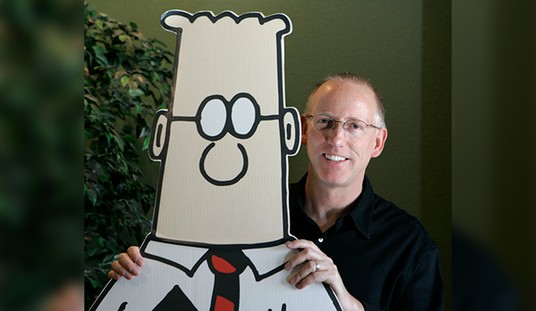Imagine that California had remained a competitive state in elections — and imagine the crisis we would have had for the past two weeks as a result. YouGov’s Will Jordan noted last night that the state has 2.8 million ballots still left to count nearly a fortnight after the election:
Per California Secretary of State, currently more unprocessed ballots there (2.8 million) than the TOTAL cast for President in 35 states.
— Will Jordan (@williamjordann) November 21, 2016
The Washington Post’s Philip Bump picked up on the news this afternoon:
Unsurprisingly, California is already recording more votes cast than any other state, according to U.S. Election Atlas. But the 2.8 million ballots left to count are more than were cast in Wyoming, Alaska, D.C., Vermont, the Dakotas, Hawaii and Delaware combined. Not all will be valid ballots, but most should be, further extending Hillary Clinton’s 1.7 million-vote lead in the national popular vote.
Here’s another thought experiment. What if the presidential election came down to the national popular vote rather than the Electoral College? We’d still be waiting for the conclusion of the election that way, too. David Wasserman’s Cook Report spreadsheet shows Hillary Clinton ahead in the popular vote by just over 1.7 million votes. We’d have to wait out the count of the remaining ballots (plus handfuls in other states), and a recount in any state could very well push the conclusion out even farther.
So … what’s taking so long? California’s a big state, true, but ballot counting is a scalable function. This has become a chronic problem for the Golden State, one which prompted a number of conspiracy theories five months ago, when it took more than two weeks for the state to count up the ballots in its primary:
As the long, languid Democratic primary vote count in California continues, a theory has taken hold among some fringe supporters of Sen. Bernie Sanders: that he actually won the June 7 vote.
Internet sleuths of varying expertise have attempted to prove that the millions of ballots left uncounted on election night contained a Sanders victory over Hillary Clinton, but were prevented from being added to the count. The fact that 2.5 million early and provisional ballots were not yet counted when the networks called the primary has become another reason to doubt that the media can fairly cover the race. …
When the networks called the race, 3,442,623 votes had been cast for either candidate, with Clinton leading by 438,537 votes. As of the last ballot update Wednesday morning, 4,693,010 total votes had been cast. Clinton’s lead was at 445,366 votes.
But the water-torture nature of the count, which processes as few as 25,000 new ballots a day, has dangled out hope for Sanders supporters.
Maybe it’s time for California to update its voting infrastructure. Some counties use electronic systems such as Hart Intercivic’s eSlate, which should allow for reasonably quick tallies and certifications. Most counties use optical-scan ballots from Premier TSX, ESS, Hart, or other vendors, which also should make election-night tallies relatively quick and painless. Los Angeles, one of the most populous counties, still uses the punch-card butterfly-style ballots that created a firestorm in Florida after the 2000 election. None of these should be a huge impediment to quick tallies, which still leaves the question as to why they can only count 25,000 ballots a day for those that don’t get counted on Election Day.
Bump notes that the state’s results turn out to be not terribly off the mark in terms of votes per elector. Some critics of the Electoral College claim that smaller states get a lower voters-per-elector ratio and gain an unfair disadvantage over larger states like California. In reality, California is more mid-range on that ratio, and it doesn’t really make much difference anyway:
But notice how evenly distributed those red and blue bars are in either of those columns. Donald Trump won a lot of states where the voters are underrepresented in the electoral college, just as he won a lot where the voters are overrepresented.
In fact, on average across states, places where Trump won had slightly fewer electors per voter than did Clinton states. On average, voters in states Clinton won were worth 5.28-millionths of an elector. (In other words, for every million voters, the state got 5.28 electors in the electoral college.) In states Trump won, the voters were worth 5.14-millionths — meaning they were slightly undervalued. (This is all assuming that Trump holds Michigan.)
Trump’s still up by 11,000 votes in Michigan, according to Wasserman’s count, so it looks like it’s going to stay in the GOP column. California is going to stay in the Democratic column, of course, regardless of what the remaining 2.8 million ballots say, as Hillary already leads in the state by 3.5 million. However, it’s still a good reminder that the Electoral College works pretty much as designed, and that Californians need to do an awful lot of work on their voting systems.








Join the conversation as a VIP Member